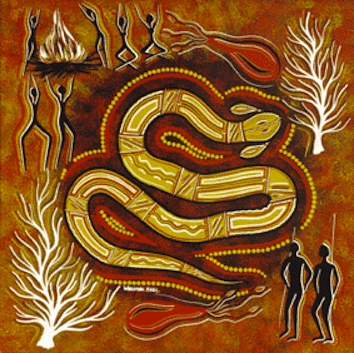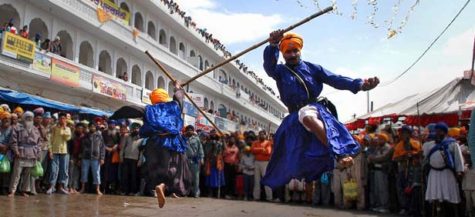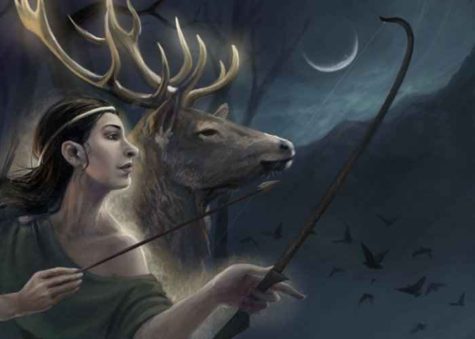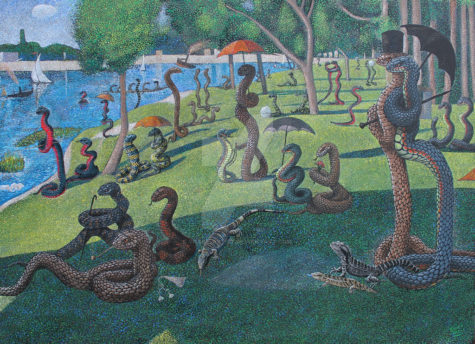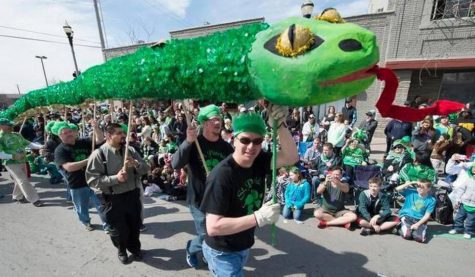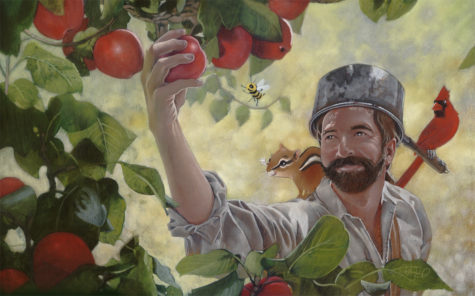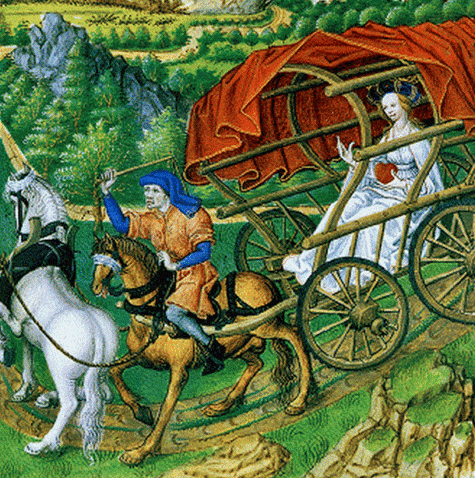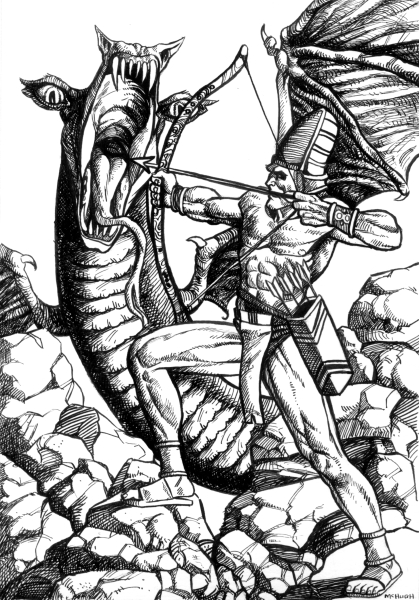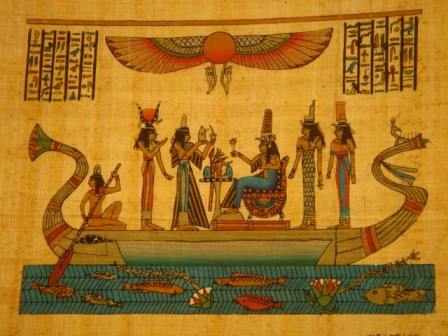shirleytwofeathers
March 17 commemorates Saint Patrick, the patron saint and national apostle of Ireland, and the arrival of Christianity in Ireland. In addition, this day also celebrates the heritage and culture of the Irish in general.
Celebrations generally involve public parades and festivals, céilithe (Irish traditional music sessions), and the wearing of green attire or shamrocks. There are also formal gatherings such as banquets and dances, although these were more common in the past. St Patrick’s Day parades began in North America in the 18th century but did not spread to Ireland until the 20th century.
The participants generally include marching bands, the military, fire brigades, cultural organisations, charitable organisations, voluntary associations, youth groups, fraternities, and so on. However, over time, many of the parades have become more akin to a carnival. More effort is made to use the Irish language; especially in Ireland, where the week of St Patrick’s Day is “Irish language week”. Recently, famous landmarks have been lit up in green on St Patrick’s Day.
Christians also attend church services and the Lenten restrictions on eating and drinking alcohol are lifted for the day. Perhaps because of this, drinking alcohol – particularly Irish whiskey, beer or cider – has become an integral part of the celebrations.
The St Patrick’s Day custom of ‘drowning the shamrock‘ or ‘wetting the shamrock‘ was historically popular, especially in Ireland. At the end of the celebrations, shamrock is put into the bottom of a cup, which is then filled with whiskey, beer or cider. It is then drank as a toast; to St Patrick, to Ireland, or to those present. The shamrock would either be swallowed with the drink, or be taken out and tossed over the shoulder for good luck.
In every household the herb is placed upon the breakfast table of the master and the mistress, who “drown the shamrock” in generous draughts of whiskey, and then send the bottle down into the kitchen for the servants.
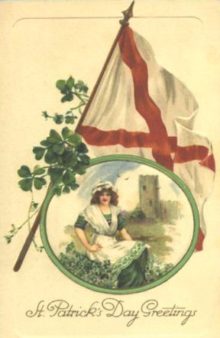 On St Patrick’s Day it is customary to wear shamrocks and/or green clothing or accessories (the “wearing of the green”). St Patrick is said to have used the shamrock, a three-leaved plant, to explain the Holy Trinity to the pagan Irish. This story first appears in writing in 1726, though it may be older.
On St Patrick’s Day it is customary to wear shamrocks and/or green clothing or accessories (the “wearing of the green”). St Patrick is said to have used the shamrock, a three-leaved plant, to explain the Holy Trinity to the pagan Irish. This story first appears in writing in 1726, though it may be older.
Long before the shamrock became associated with St. Patrick’s Day, the four-leaf clover was regarded by ancient Celts as a charm against evil spirits.
In pagan Ireland, three was a significant number and the Irish had many triple deities, a fact that may have aided St Patrick in his evangelisation efforts. Patricia Monaghan says there is no evidence that the shamrock was sacred to the pagan Irish. However, Jack Santino speculates that it may have represented the regenerative powers of nature, and was recast in a Christian context—icons of St Patrick often depict the saint “with a cross in one hand and a sprig of shamrocks in the other”. Roger Homan writes, “We can perhaps see St Patrick drawing upon the visual concept of the triskele when he uses the shamrock to explain the Trinity”.
In the early 1900’s, O. H. Benson, an Iowa school superintendent, came up with the idea of using a clover as the emblem for a newly founded agricultural club for children in his area. In 1911, the four-leaf clover was chosen as the emblem for the national club program, later named 4-H.
The color green has been associated with Ireland since at least the 1640’s, when the green harp flag was used by the Irish Catholic Confederation. Green ribbons and shamrocks have been worn on St Patrick’s Day since at least the 1680s. The Friendly Brothers of St Patrick, an Irish fraternity founded in about 1750, adopted green as its color.
However, when the Order of St. Patrick—an Anglo-Irish chivalric order—was founded in 1783 it adopted blue as its color, which led to blue being associated with St Patrick. During the 1790’s, green would become associated with Irish nationalism, due to its use by the United Irishmen. This was a republican organisation—led mostly by Protestants but with many Catholic members—who launched a rebellion in 1798 against British rule.
The phrase “wearing of the green” comes from a song of the same name, which laments United Irishmen supporters being persecuted for wearing green. Throughout the 19th and 20th centuries, the color green and its association with St Patrick’s Day grew.
The wearing of the ‘St Patrick’s Day Cross’ was also a popular custom in Ireland until the early 20th century. These were a Celtic Christian cross made of paper that was “covered with silk or ribbon of different colors, and a bunch or rosette of green silk in the center”.
The most popular of the many legends about St. Patrick is the one which credits him for having driven all the snakes and vermin out of Ireland.
Here’s an old old poem about it:
There’s not a mile in Ireland’s isle
where the dirty vermin musters;
Where’er he put his dear forefoot
he murdered them in clusters.
The toads went hop, the frogs went flop,
slap dash into the water,
And the beasts committed suicide to
save themselves from slaughter.
Nine hundred thousand vipers blue
he charmed with sweet discourses.
And dined on them at Killaloo
in soups and second courses.
When blindworms crawling on the grass
disgusted all the nation,
He gave them a rise and opened their eyes
to a sense of the situation.
The Wicklow Hills are very high, and
so’s the Hill of Howth, sir;
But there’s a hill much higher still—ay,
higher than them both, sir;
‘Twas on the top of this high hill St.
Patrick preached the sarmint
That drove the frogs into the bogs and
bothered all the varmint.
About St Patrick
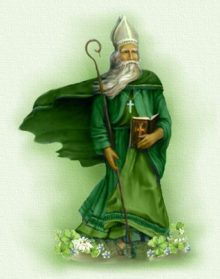 Patrick was a 5th-century Romano-British Christian missionary and bishop in Ireland. Much of what is known about Saint Patrick comes from the Declaration, which was allegedly written by Patrick himself. It is believed that he was born in Roman Britain in the fourth century, into a wealthy Romano-British family. His father was a deacon and his grandfather was a priest in the Christian church.
Patrick was a 5th-century Romano-British Christian missionary and bishop in Ireland. Much of what is known about Saint Patrick comes from the Declaration, which was allegedly written by Patrick himself. It is believed that he was born in Roman Britain in the fourth century, into a wealthy Romano-British family. His father was a deacon and his grandfather was a priest in the Christian church.
According to the Declaration, at the age of sixteen, he was kidnapped by Irish raiders and taken as a slave to Gaelic Ireland. ] It says that he spent six years there working as a shepherd and that during this time he “found God”. The Declaration says that God told Patrick to flee to the coast, where a ship would be waiting to take him home. After making his way home, Patrick went on to become a priest.
According to tradition, Patrick returned to Ireland to convert the pagan Irish to Christianity. The Declaration says that he spent many years evangelising in the northern half of Ireland and converted “thousands”. Patrick’s efforts against the druids were eventually turned into an allegory in which he drove “snakes” out of Ireland (Ireland never had any snakes).
Tradition holds that he died on 17 March and was buried at Downpatrick. Over the following centuries, many legends grew up around Patrick and he became Ireland’s foremost saint.
NOTE:
What many people don’t realize is that the serpent was actually a metaphor for the early Pagan faiths of Ireland. St. Patrick brought Christianity to the Emerald Isle, and did such a good job of it that he practically eliminated Paganism from the country. Because of this, some modern Pagans refuse to observe a day which honors the elimination of the old religion in favor of a new one. It’s not uncommon to see Pagans and Wiccans wearing some sort of snake symbol on St. Patrick’s Day, instead of those green “Kiss Me I’m Irish” badges.
Sources: Almanac.com, Wikipedia, and Encyclopaedia of Superstitions, Folklore, and the Occult Sciences
- Other names: Damballah Weddo, Da, Papa Damballa, Obatala
- Holiday: March 17 (St. Patrick’s Day)
Associated Catholic Saint Patrick (who drove the snakes out of Ireland), and sometimes also Moses, whose staff transformed into a snake to prove the power of God over that wielded by Egyptian priests, Damballah is the primordial snake Iwa of life, wealth and wisdom. He is venerated in Dahomey as well as Haitian Vodou. He may also survive in the New Orleans folk saint Blanc Dani.
He is one of the most important of all the loa, Damballa is the Sky Father and the primordial creator of all life. He rules the mind, intellect, and cosmic equilibrium. Damballa, as the serpent spirit and “The Great Master”, created the cosmos by using his 7,000 coils to form the stars and the planets in the heavens and to shape the hills and valleys on earth. By shedding the serpent skin, Damballa created all the waters on the earth.
Read more about him here: Damballah
Offerings:
For a very traditional offering, make a bed or hill of white flour on a perfectly clean, pure white plate. Nestle one whole, raw white egg into the center of the flour and serve.
Other offerings could include white candles and white foods like rice, milk, whole raw eggs (leave them plain or rub gently with rose or other mildly scented, fine quality floral water), corn syrup, white chickens, or white flowers. More lavish offerings might include luxurious white fabrics, crystal or porcelain eggs and/or snakes.
He is a stickler for cleanliness. He doesn’t like strong, pervasive odors of any kind, but especially tobacco. If you smoke, then do so far from his altar space or anywhere associated with him. He may object to cleaning products with strong odors too, as well as air fresheners with strong aromas. Rooms should smell clean and fresh. Open a window to aerate them. He does not object to light floral odors, like rose or orange blossom water, and traditionally expresses a fondness for Pompeii Lotion, a cologne product found in botanicas and spiritual supply stores.
From: Encyclopedia of Spirits
Hola Mohalla is an annual Sikh festival, celebrated extensively over three days (March 13 thru 15) mainly at the Anandpur Sahib Gurudwara, in the state of Punjab. It is a martial fair that was introduced by Sikh Guru, Guru Gobind Singh, to fortify the Sikh community by carrying out martial training and mock-drills, along with religious discussions.
The festivities of Hola Mohalla begin by visiting the gurudwaras for early morning prayers. Durbars are held and the Guru Granth Sahib is read. Kirtans and religious lectures are carried out and after the religious ceremonies are over, the ‘prasad’ is distributed among the people.
The evening is filled with a lot of anticipation and thrill, as martial members of the Sikh community (Nihang Sikhs) display their physical strength through daring acts like mock-battles (Gatka), sword-fighting displays, archery and exercising on speeding horses. They also splatter colors on the audience.
This is followed by cultural activities including music, dance and poetry programs and competitions to unwind the charged up atmosphere. A procession is set out on the last day, and the Panj Pyaras walk in front crossing all the major gurudwaras in that area.
Hola Mohalla is the time to celebrate and dedicate oneself into community service. ‘Langars’ are organised, and local people come forward to help by arranging the raw materials for the langar, cleaning the gurudwaras, and washing the dishes.
Here’s a Video:
Source: Journey Mart
An ancient Greek custom of honoring Artemis’s birthday with a Full Moon cake is still seen today in our birthday cakes. The Greeks even put lighted candles on the Moon cake.
To honor the birthday of the goddess Artemis, bake or buy a small cake or cupcake. In Moon Magick, D J Conway recommends this ritual be performed on the night of the March crescent – it feels more appropriate to me to do the ritual on the night before or the night of her actual day.
Dress in nice clothes as if you were entertaining a friend. Cover your altar or spiritual place with a nice cloth. Put the cake with a small candle on it in the middle of the altar. Set pictures or statues of animals around it for decoration. Artemis loves cats of all kinds, deer, and all wild animals. Set a glass of juice or wine next to the cake.
Take a sip of juice and light the candle. Sing “Happy Birthday” to the goddess if you wish – or simply and sincerely wish her a happy birthday. Then say:
Lady of Wild Things, Moon Huntress,
Mistress of magick and enchantment,
I chant your lovely name for protection.
Artemis! Artemis! Artemis!
I whisper your praises to the Full Moon.
Cradle my restless, worn spirit
In the secret places of your deep woodlands.
Renew my life, swift Artemis.
Cut yourself a piece of the cake and eat it. Drink the juice. Tell the goddess why you need protection. When you are finished, thank her for the help that will come. Put the remainder of the cake outside as a feast for the birds and animals.
Note: I think it’s nice to simply honor the gods without necessarily asking for anything in return. A powerful blessing could be as simple as a recitation of her names and titles. For example:
Hail Mistress of the Animals
My heart opens to the Moon Huntress
Blessings to She of the Wild
Love to the Most Beautiful
Praise to the Lady of Many Shrines and Many Cities
I Worship the Lady of the Wild Mountains
Adoration to the Opener of the Womb
Gratitude to the Mistress of Magic and Enchantment
Artemis! Artemis! Artemis!
For maximum effect – repeat each line three times.
Another note: This ritual can be tweaked for use for any god or goddess on his/her day. Simply find an appropriate invocation – or rewrite the one above to fit, and decorate the altar with whatever might please your chosen deity.
Sources: This post was put together by Shirley Twofeathers for Gypsy Magic, and was moved to its new home here at shirleytwofeathers.com you may repost and share without karmic repercussions only if you give me credit and a link back to this website. Blessed be.
Snake Sunday is a holiday celebrated the Sunday before St. Patrick’s Day. Typically it is used as a way of dealing with a hangover from celebrating a “pseudo” St. Patrick’s Day which is commonly done by partaking of the great Irish tradition on a Saturday night when the actual holiday is during the work week.
Commonly in honor of Snake Sunday, celebrators will exclaim “SNAKE SUNDAY” typically in unison. This cheer usually follows either the question, “What day is it?” some variant thereof, or if someone says “Happy Snake Sunday!”
Example:
Ted: “Hey Lance, how you doing today?”
Lance: “Hey Ted, pretty hungover from celebrating St. Patrick’s Day last night, but otherwise it’s a great Snake Sunday!”
Ted/Lance: “SNAKE SUNDAY!!!”
Source: Urban Dictionary
Snake Saturday Parade & Festival, celebrated on the Saturday before St Patrick’s Day, has become the largest family fun Irish celebration in the Kansas City Metro area. It also generates an enormous amount of exposure and charitable donations to benefit local non-profit organizations.
Each year Snake Saturday Parade & Festival awards cash prizes to some 50 –100 local charities that participate in the festivities.
Parade Founder Mickey Finn tells the story of how Snake Saturday came to life in 1983. The concept started as a promotion for Rodeway Inn, with four floats, a Grand Marshal and co-founder, Bill Grigsby. It was cold outside, only about ten degrees. The parade took place in the motel parking lot, allowing people to view from their hotel rooms and the coffee shop.
And what would a parade be without a winner of Best of Parade? A young lady on the back of a Harley Davidson motorcycle wearing a bright green bikini took home the honor. After the parade, the North Kansas City mayor turned to Mickey Finn and said, “We might as well take it to the street next year.” And as they say, “the rest is history”. The parade has celebrated every year since, regardless of weather conditions and always on the Saturday before St. Patrick’s Day.
As the Snake Saturday Parade & Festival became the largest family fun Irish celebration in the area, it also generated an enormous amount of exposure and charitable donations benefiting local non-profit organizations. The process started after non-profit businesses were invited to build floats and compete for prize money. The response was overwhelming and community involvement soared to new heights.
Saturday Parade & Festival is made possible by wonderful, dedicated people, businesses, schools, police, fire, city staff, donors, volunteers, planners, participants and sponsors including North Kansas City, North Kansas City Hospital, North Kansas City Beverage and many more. It is the commitment of the entire community to keeping these festivities safe and fun for the whole family that has cultivated our success and has put us on the map as one of the best parade celebrations in the Midwest region.
Source: Snake Saturday
Celebrating John Chapman, legendary American pioneer and folk hero who planted apple trees across the American Frontier. Chapman was born in Massachusetts, September 26, 1774, but Johnny Appleseed Day is celebrated on March 11th.
Chapman earned his nickname because he planted small orchards and individual apple trees during his travels as he walked across 100,000 square miles of Midwestern wilderness and prairie. He was a genuine and dedicated professional nurseryman, known for his generous nature, his love of the wilderness, his devotion to the Bible, his knowledge of medicinal herbs, his harmony with the Indians, and his eccentric nature, too.
Celebrate this holiday by doing something with apples. Decorate with images of apples, apple trees, and Johnny Appleseed himself. You might visit an orchard to pick apples, hold a pot luck feast with apple smoked pork and apple pie. You might even want to plant an apple tree in your yard.
Here is a blessing you can use:
Apples are sacred
As everyone must know.
We remember Johnny
Wherever apples grow.
So we say a blessing
Wherever they may be
Blessing on the apples
And Blessing on each tree.
~Elizabeth Barrette
About Johnny Appleseed
While the legend depicts Johnny Appleseed as a barefoot vagrant, cooking pot on his head, and roaming the landscape strewing apple seeds randomly, it is far more likely that he was more of an eccentric but skilled professional, establishing nurseries of apple trees, and selling his services progressively westward to landowners interested in planning orchards. He’d teach his clients how to establish an orchard, how to keep deer and livestock at bay, and once the nursery was thriving, he’d move on to the next person interested in planting orchards.
If he had to stay in one place for any length of time, he’d erect a teepee like structure and live humbly on the bare ground. It is said that his only possessions were the clothes on his back, a bowl and a spoon, and a cooking pot for his gruel.
He was a follower of Swedenborg and devoutly believed that the more he endured in this world the less he would have to suffer and the greater would be his happiness hereafter—he submitted to every privation with cheerfulness and content, believing that in so doing he was securing snug quarters hereafter.
In the most inclement weather he might be seen barefooted and almost naked except when he chanced to pick up articles of old clothing. Notwithstanding the privations and exposure he endured, he lived to an extreme old age, not less than 80 years at the time of his death—though no person would have judged from his appearance that he was 60. He always carried with him some work on the doctrines of Swedenborg with which he was perfectly familiar, and would readily converse and argue on his tenets, using much shrewdness and penetration.
Next time you bite into an apple, think of “Johnny Appleseed.”
From Almanac.com
This is the name given to two festivals held in ancient Boeotia, which was a part of Greece, in honor of the reconciliation of Hera and Zeus. The dates of these festivals are somewhat nebulous and varied from place to place and year to year. One source cites March 10th.
The story:
According to the myth, Hera and Zeus quarreled and Hera went away to Euboea and refused to return to his bed. To trick her into coming back and on the advice of Cithaeron, Zeus dressed up a carved oak-trunk to resemble a bride and let it be known that he planned to marry Plataea, the daughter of Asopus. Hera was so angry she tore the clothes from the statue, discovered the deception, and was so pleased that the two were reconciled.
The festivities:
The Lesser Daedala (Δαίδαλα μικρά) was held every four to six years. The people of Plataea went to an ancient oak grove and exposed pieces of cooked meat to ravens, attentively watching upon which tree any of the birds, after taking a piece of meat, would settle. Out of this tree they carved an image, and having it dressed as a bride, they set it on a bullock cart with a bridesmaid beside it. The image seems then to have been drawn to the bank of the river Asopus and back to the town, attended by a cheering crowd.
After fourteen of these cycles (approx.59 or 60 years), the Greater Daedala (Δαίδαλα μεγάλα) was held, and all Boeotia joined in the celebration. At its start one wooden figure was chosen from the many that had accumulated through the years and designated the “bride”. The wooden figure was prepared as a bride for a wedding, ritually bathed in the Asopus, adorned and raised on a wagon with an attendant. This wagon led a procession of wains carrying the accumulated daedala (all the other images that had been created over the years) up to the summit of Mount Kithairon, where a wooden sacrificial altar was erected out of square pieces of wood.
This was covered with a quantity of dry wood, and the towns, persons of rank, and other wealthy individuals, offered each a heifer to Hera and a bull to Zeus with plenty of wine and incense, while at the same time all of the daedala were placed upon the altar. For those who did not possess sufficient means, it was customary to offer small sheep, but all these offerings were immolated in a hecatomb in the same manner as those of the wealthier persons. The fire consumed both offerings and altar
An ancient account of myth behind the festival is related by Pausanias:
“Hera, they say, was for some reason or other angry with Zeus, and had retreated to Euboia. Zeus, failing to make her change her mind, visited Kithairon, at that time despot in Plataea, who surpassed all men for his cleverness. So he ordered Zeus to make an image of wood, and to carry it, wrapped up, in a bullock wagon, and to say that he was celebrating his marriage with Plataia, the daughter of Asopus. So Zeus followed the advice of Kithairon.
Hera heard the news at once, and at once appeared on the scene. But when she came near the wagon and tore away the dress from the image, she was pleased at the deceit, on finding it a wooden image and not a bride, and was reconciled to Zeus. To commemorate this reconciliation they celebrate a festival called Daidala, because the men of old time gave the name of daidala to wooden images… the Plataeans hold the festival of the Daidala every six years, according to the local guide, but really at a shorter interval.
I wanted very much to calculate exactly the interval between one Daedala and the next, but I was unable to do so. In this way they celebrate the feast.”
Found at Wikipedia
March 12th, is the Feast of Marduk, an ancient Babylonian God. Acknowledged as the creator of the universe and of humankind, the god of light and life, and the ruler of destinies, he rose to such eminence that he claimed 50 titles.
The epic poem Enûma Elish tells the story of Marduk’s birth, heroic deeds and becoming the ruler of the gods. Also included in this document are The Fifty Names of Marduk. You can read more about Marduk at The Powers That Be.
Aside from being a fertility god and god of thunderstorms, Marduk’s original character is obscure. Later he became connected with water, vegetation, judgment, and magic. He is normally referred to as Bel “Lord”, also bel rabim “great lord”, bêl bêlim “lord of lords”, ab-kal ilâni bêl terêti “leader of the gods”, aklu bêl terieti “the wise, lord of oracles”, muballit mîte “reviver of the dead”, etc.
A Ritual for Marduk’s Feast Day:
- Colors: Light blue and grey
- Element: Air
- Altar: On a cloth of pale blue place a naked sword, three grey candles, and a loaf of bread shaped like a dragon.
- Offerings: Cut something into pieces.
- Daily meal: Fish or meat, chopped finely.
Invocation to Marduk
The warrior’s sword is clean and bright
And has two edges. So Marduk found.
Taking up the sword, he slew
The Dragon Mother Tiamat
And from her body carved the earth
And the overarching sky.
Yet he found, as we all do,
That he could not live anywhere
On this the new earth without
Remembering her, and all that she was,
And he lived and died surrounded
By her at the last,
And her body took his
When at last he was betrayed.
Beware, ye who would be king
By force of arms! Your enemies define you,
So choose them well.
(One who has been chosen to do the work of the ritual takes up the sword and cleaves the bread dragon into pieces, which are then passed around and eaten. Exit to the beating of a drum.)
From: Pagan Book of Hours
Traditionally the feast lasted for twelve days:
Five thousand years ago, in the cradle of Western civilization that lay between the rivers Tigris and Euphrates that we now call Iraq, the ancient Babylonians and Sumerians held their New Year celebrations at about the time of the Spring Equinox. These Mesopotamians (a word that means ‘[dwellers of the land between the rivers’), the Babylonians to the north and the Sumerians further to the south called this festival, respectively, Akitaand Zagmuk (or Zakmuk).
On the first three days, the priests would come to the high Temple of Marduk in Babylon, the Ésagila, and offer prayers of lamentation and supplication. These prayers were repeated on the fourth day, when the Enûma Eliš, the great Babylonian Epic of Creation, was recited, telling the story of Marduk’s victory over Tiamat.
On the fifth day, the king of Babylon came to the Ésagila, was stripped of his crown, robes and regalia, and was humiliated by the High Priest, who struck him in the face, symbolizing submission before the greater power of the god, after which his crown was returned, symbolizing the god’s approval of his royal and civic roles.
Marduk is then captured by the evil gods and held prisoner by them, in the Etemenanki, a seven-storey ziggurat (identified in the Torah and the Bible as the Tower of Babel), where he awaits the arrival of his son, Nabu. He arrives on day six, symbolized by a great, formal procession of the King and the citizens of Babylon to the Ésagila, and on day seven, Nabu frees his embattled father.
The eighth day saw the gathering of the statues of the gods in the hall of Destinies, where they bestow their powers on Marduk, confirming his primacy over them all. A victory procession to the House of Akita, situated outside the city walls, took place on the ninth day, as the populace celebrated Marduk’s defeat of Tiamat, and on the tenth day, Marduk returns to earth during the night and marries the goddess Ishtar, their roles acted by the King of Babylon and the High Priestess of the Ésagila.
The eleventh day sees the return to the hall of Destinies, where the gods and Marduk renew their covenant with mankind before they return to Heaven, and on the final day, the statues of the gods were returned to their places in the Ésagila and the king would be slain, so that his spirit could assist Marduk – although, in reality, a criminal would be elected as a proxy king and killed in place of the true king.
Note:
We can see here clear parallels here with the Lord of Misrule, a substitute king who takes over the responsibilities of the real king at the festival time, as well as story of Jesus and Barabbas in the New Testament, (Barabbas means, literally, ‘Son of the Lord’), and the wide-spread legends of the dying god who returns to life.
The twelve days of Zagmuk are the origins of our twelve days of Christmas, although moved from the Babylonian New Year to our New Year, and they may well be the intercalary adjustment of 11.25 days needed to reconcile the 354 days of the lunar year with the 365.25 days of the solar year.
The names and the mythology of Marduk were also incorporated into the fictional mythology of the Necronomicon. Each of the fifty names was given a power and a seal. These can be found here: About The Fifty Names of Marduk
Source: Wikipedia and The Study
The Festival of Navigation (March 5th) was an ancient Roman festival that celebrated Isis as the ruler over safe navigation, boats, fishing, and the final journey of life. At this festival, after an elaborate parade, a Ship of Isis filled with great offerings of incense, flowers, libations and small shrines was sent out to sea.
For an eyewitness description of this festival, visit this post: Navigium Isidis.
I do like the idea of sending out ships with offerings to Isis. And with that in mind, I’m sharing here a video tutorial on how to make a paper boat that floats on water. This small boat could be decorated with symbols or with petitions for guidance, filled small offerings, and then floated down a stream, creek, river, etc. If you don’t have access to water, you could ritually burn your boat on a bed of incense and fragrant herbs and allow the smoke to take your petitions and offerings to the goddess.

